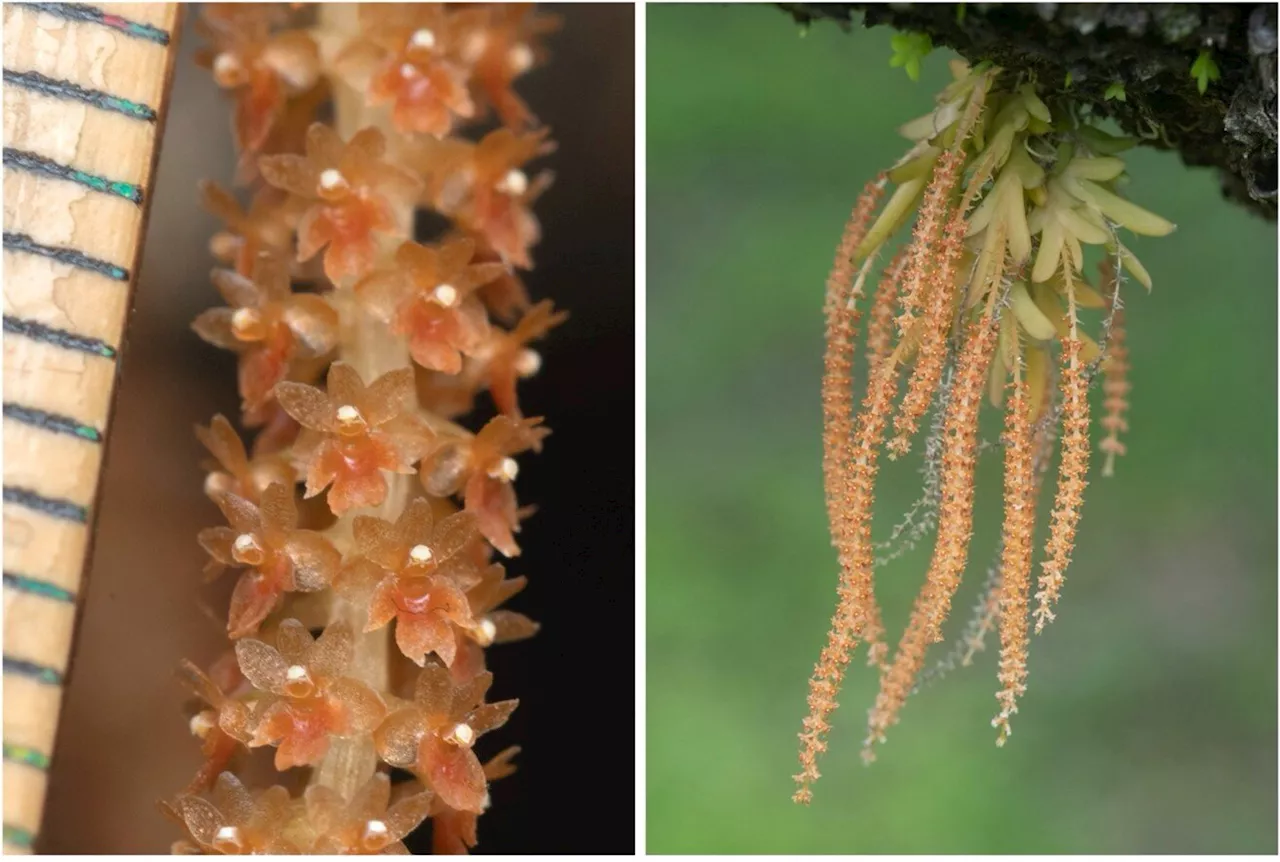A single crystal shows 30 million years of geological history of the Himalayas by tracing its thorium concentration and age.
This image of a single crystal shows 30 million years of geological history of the Himalayas by tracing its thorium concentration and age. Matthew J. Kohn, CC BY-NC-NDmetamorphic rocksof their minerals. With measurements on scales smaller than the thickness of a human hair, we can unlock the age and chemical compositions hidden inside tiny crystals to understand processes occurring on a colossal scale.
A snapshot of Annapurna, one mountain in the Himalayan range, taken by the author in 2014. Matthew J. Kohn, CC BY-NC-NDfrom rocks we collected from the Annapurna region of central Nepal. Though only 0.07 inches long, this is a gigantic crystal by geologists standards – roughly 30 times larger than typical monazite crystals. We nicknamed it “Monzilla.”, we collected and visualized data on the concentration of thorium – a radioactive element similar to uranium – in the crystal.
Thorium-lead dating measures the ratio of parent thorium to its daughter lead; this ratio depends on thorium’s decay rate and the age of the crystal. We see two different zones are present in the sample: a roughly 30 million-year-old core with high thorium concentrations and a roughly 10 million-year-old, blobby rim with low thorium concentrations.in central Nepal triggered landslides that obliterated the town of Langtang, where I had worked about a dozen years prior.
Our chemical analyses of this monazite crystal and nearby samples indicate that these rocks were buried deep underneath thrust faults, causing them to partially melt and form the roughly 30 million-year-old monazite core. About 10 million years ago, the rocks were carried up on a major thrust fault, forming the monazite rim. This data shows that building mountain ranges takes a long time – at least 30 million years, in this case – and that rocks basically cycle through them.
By studying rocks in other locations, we can chart the movement of these thrusts and better understand the origins of the Himalayas.
United States Latest News, United States Headlines
Similar News:You can also read news stories similar to this one that we have collected from other news sources.
 Tiny orchid flowers pollinated by tiny fliesResearchers Yuta Sunakawa, Ko Mochizuki, and Atsushi Kawakita of the University of Tokyo have discovered the first orchid species pollinated by gall midges, a tiny fly species. This is the first documented case of an orchid species found to be pollinated by gall midges, and it makes the orchids the eleventh such plant family.
Tiny orchid flowers pollinated by tiny fliesResearchers Yuta Sunakawa, Ko Mochizuki, and Atsushi Kawakita of the University of Tokyo have discovered the first orchid species pollinated by gall midges, a tiny fly species. This is the first documented case of an orchid species found to be pollinated by gall midges, and it makes the orchids the eleventh such plant family.
Read more »
 The Winklevoss twins just invested millions in a tiny British soccer clubCameron and Tyler Winklevoss have invested $4.5 million worth of bitcoin in Real Bedford Football Club, a non-league, semiprofessional club.
The Winklevoss twins just invested millions in a tiny British soccer clubCameron and Tyler Winklevoss have invested $4.5 million worth of bitcoin in Real Bedford Football Club, a non-league, semiprofessional club.
Read more »
 Shape-shifting robots of the future could leverage liquid crystalsScientists shape liquid crystals molecules in 3D, opening the door to robots that shapeshift in response to stimuli.
Shape-shifting robots of the future could leverage liquid crystalsScientists shape liquid crystals molecules in 3D, opening the door to robots that shapeshift in response to stimuli.
Read more »
 Hidden chunk of Earth's crust that seeded birth of 'Scandinavia' discovered through ancient river crystalsPatrick Pester is a freelance writer and previously a staff writer at Live Science. His background is in wildlife conservation and he has worked with endangered species around the world. Patrick holds a master's degree in international journalism from Cardiff University in the U.K.
Hidden chunk of Earth's crust that seeded birth of 'Scandinavia' discovered through ancient river crystalsPatrick Pester is a freelance writer and previously a staff writer at Live Science. His background is in wildlife conservation and he has worked with endangered species around the world. Patrick holds a master's degree in international journalism from Cardiff University in the U.K.
Read more »
 New method provides automated calculation of surface properties in crystalsComputer-based methods are becoming an increasingly powerful tool in the search for new materials for key technologies such as photovoltaics, batteries, and data transmission. Prof. Dr.
New method provides automated calculation of surface properties in crystalsComputer-based methods are becoming an increasingly powerful tool in the search for new materials for key technologies such as photovoltaics, batteries, and data transmission. Prof. Dr.
Read more »
 Hair-Straightening Products Entail Acute Kidney Failure RiskProducts containing glyoxylic acid were associated with the accumulation of calcium oxalate crystals in the kidneys.
Hair-Straightening Products Entail Acute Kidney Failure RiskProducts containing glyoxylic acid were associated with the accumulation of calcium oxalate crystals in the kidneys.
Read more »
